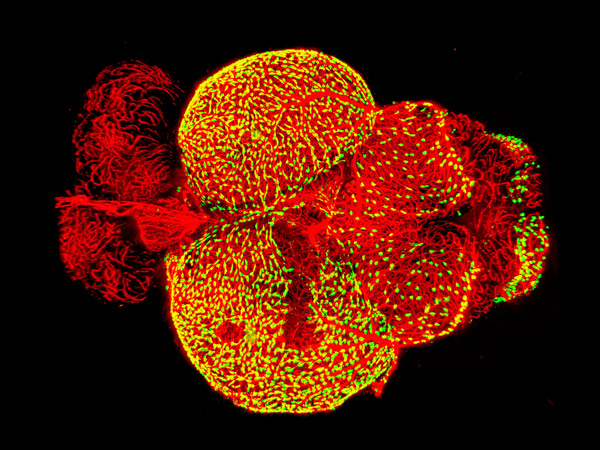Oct. 30, 2023 Research Highlight Biology
How molecules in the zebrafish brain indicate it’s time to quit a fight
The molecular mechanism in the brains of zebrafish that causes a fish to withdraw from a fight has been identified
Two RIKEN neuroscientists have uncovered a molecular switch in the zebrafish brain that causes a fish to quit fighting against another zebrafish1. This discovery could shed light on various mood disorders in people.
Like many animals, two male zebrafish placed close to each other will start fighting. They will circle and take lunging bites at each other until eventually one of them acquiesces and exhibits loser-like behavior such as fleeing.
Knowing when to bow out of a fight is critical since continuing beyond a certain point risks serious injury or even death. Researchers are interested in discovering what happens in the brains of losing fish to induce this behavior, both because many animals exhibit similar behavior and because it could help illuminate mood disorders in people such as social withdrawal and social anxiety.
Previously, a team led by Hitoshi Okamoto of the RIKEN Center for Brain Science (CBS) had found that a deep-brain structure known as the habenula contains two neural circuits that play a key role in determining whether a fight is won or lost. But the molecular activation of these circuits was not known.
Now, Okamoto and Masae Kinoshita, also at CBS, have found a molecular mechanism in the brains of losing zebrafish that is probably behind the switch in behavior.

Figure 1: A light micrograph of an adult zebrafish brain. RIKEN researchers have discovered the molecular mechanism that is activated in the brains of losing zebrafish. © NATIONAL INSTITUTES OF HEALTH/SCIENCE PHOTO LIBRARY
Okamoto and Kinoshita placed two zebrafish in a tank and allowed them to fight. They then sliced the brains of both the winner and the loser, and examined them under a microscope. The researchers found that in losers, the neurotransmitter acetylcholine causes the receptor for glutamate—another neurotransmitter—to move from the inside to the surface of the postsynaptic membrane of the neurons in the interpeduncular nucleus, the target of the two neural circuits from the habenula. This transfer of the glutamate receptor did not occur in winners.
The implications of this finding extend far beyond fish. “This circuit from the habenula to the interpeduncular nucleus exists in all vertebrates,” says Okamoto. “So I’m quite confident that it plays a similar role in other animals.”
In particular, it may be relevant to mood disorders in people. “There’s lots of research implicating the habenula in severe depression, but the part of the habenula connected to the interpeduncular nucleus hasn’t been studied very much,” explains Okamoto. “I’m sure that this circuit is probably involved in conditions such as social withdrawal.”
The pair plans to continue exploring the roles of the winner and loser circuits. “Our ultimate goal is to identify the real roles of these two circuits,” says Okamoto. “Our current hypothesis is that the winner circuit makes fish focus on their internal state, whereas the loser circuit causes fish to look to the external world. We’re currently performing experiments to test this hypothesis.”
Related contents
- Zebrafish predict the future to avoid virtual danger
- Brain circuit activated by hunger makes starved fish fight for longer
- Fights are won and lost in the brain
Rate this article
Reference
- 1. Kinoshita, M. & Okamoto, H. Acetylcholine potentiates glutamate transmission from the habenula to the interpeduncular nucleus in losers of social conflict Current Biology 33, 2121–2135 (2023). doi: 10.1016/j.cub.2023.03.087
